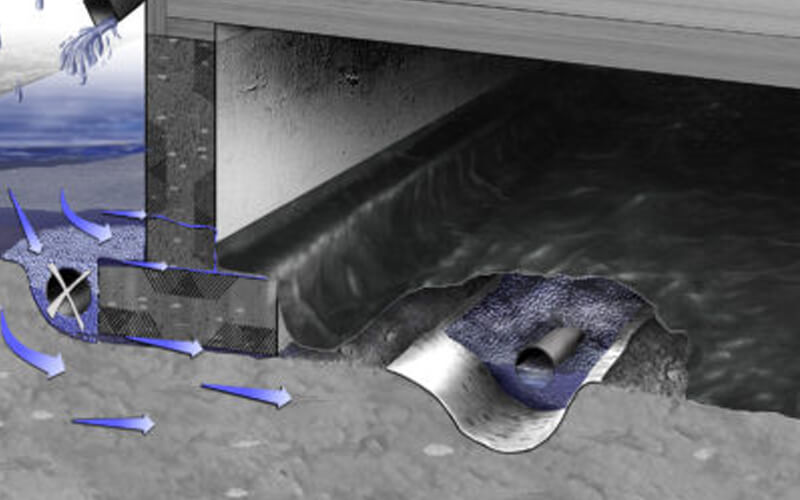Basement waterproofing is a vital component of any new or existing homes, and when installed correctly, you would not encounter problems with flooding or any water-based damages. One such method for residential basement waterproofing is the use of drain tile systems.
Here is everything you need to know about the drain tile.
What Is A Drain Tile?
A drain tile, however the name suggests, does not actually involve using a tile in the system. Instead, a drain tile contains a network of rigid or flexible perforated PVC piping, mostly 4 inches in diameter, laid underground around your home’s foundation.
The drain tile system functions as a water removal system around the exterior of your foundation or inside your basement. This network of pipes directs water away from your house, keeping your basement safe and dry. Nowadays, most local building codes require you to install a drain tile during new home construction. However, even if it is not regulated, it is smart for you to install it in your basement.
How Do You Install A Drain Tile?
Before installing a drain tile, you may want to consult a waterproofing professional capable of determining the best solution for you. They could supervise you as to the trench’s width and depth and the location of the perforated pipe around your home.
Residential constructions typically install drain tile systems around the perimeter of the basement before any further construction. The drain tile would be laid around the foundation footer’s perimeter, and walls in a trench dug five or six inches deep. Gravel is then placed above and beneath the perforated pipe to filter out soil and other sediments from clogging the drain tile.
The pipe network leads to a sump pump which drives the collected water back to the surface, or they go through a downward sloping drain system that leads away from your home to the surface where the water can safely drain away. Some opt to place a porous fabric for a second layer of filtration before covering and completing the drain tile installation with a sufficient amount of soil.
You could also install a drain tile inside your basement using the same steps for exterior drain tiles. However, the interior drain tile system would be located just below the floor of your basement.
What Are The Pros And Cons?
Pro: The nature of the drain tile’s installation makes it relatively inexpensive when done during initial construction. It is easier to access the sides of the foundation footing and walls. Additionally, when the local code requires a drain tile, you could factor in the cost of the installation and the sump pump along with the foundation and basement of your home.
If done correctly, drain tile systems effectively divert water away from the foundations and walls of your basement.
Con: If you have an existing basement in need of a drainage system and choose to install a drain tile, you could encounter an expensive installation. For exterior drain tile systems, you would need to excavate all soil around your home until you reach the footings’ depth. This entails the use of heavy machinery and equipment to dig trenches and a collection pit.
Meanwhile, you would need to dig a trench in the perimeter for an interior drain tile, requiring you to break the basement floor.
Improper drain tile would give you more problems than solutions. They would tend to clog over time with inadequate filtering systems requiring you to replace them, costing more money.
What If You Want To Install A Drain Tile In Your Existing Basement?
If you are wondering if you could install a drain tile in your existing basement, then the answer is yes. If you already waterproofed your basement and want additional security, drain tile systems could be the best fit for your home.
However, as effective the system is, you should be aware of the cost and labor involved in installing them into an existing basement. Exterior drain tile systems, especially, are quite extensive to set up, as you would need to dig around your home as previously discussed. This would mostly involve using a backhoe and help from professionals to position the drain tile properly.
If you do not want to excavate around your home, another option would be to use an interior drain tile system in your basement. It may be cheaper than an exterior drain tile, but it would considerably cost more than a system put in place during initial construction phases.

